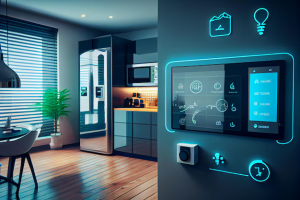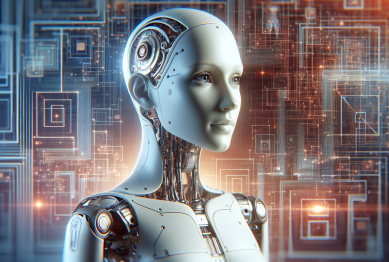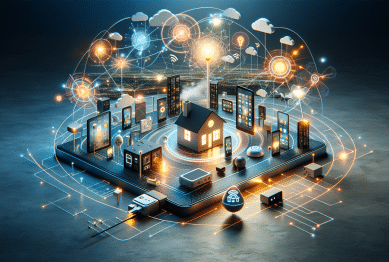Artificial intelligence is shifting from futuristic buzzword to practical reality. This guide explores how AI tools are being integrated into everyday life, from managing smart homes to supporting creative hobbies—and what features people are looking for in this technology.

The Rise of Artificial Intelligence in Everyday Living
Artificial intelligence has become a powerful presence in daily life. Smart devices and voice assistants are now found in many households, streamlining everything from grocery lists to thermostat settings. The adoption of AI technology in home environments is on the rise due to accessibility and falling technology costs. Digital assistants, like smart speakers and smartphone AI, are making convenience a priority for busy individuals and families alike. These systems recognize speech, execute commands, and even provide entertainment options. Anyone interested in home automation can explore how new tech trends like machine learning, personalized recommendations, and natural language processing are fueling the growth of AI across consumer devices.
AI is more than a productivity booster—it plays a central role in education and entertainment. AI-driven language apps help users learn new tongues faster, while music and streaming services use algorithms for tailored playlists. Machine learning allows these apps to adapt to changing preferences, giving every user a customized experience. Automated photo sorting and smart home security systems demonstrate how AI enhances both practical and leisure activities, making everyday routines feel easier and more secure. It’s not just about novelty; these advances support an improved quality of living and greater digital literacy.
Consumers are increasingly curious about what AI can really do for them at home. People want AI systems to be intuitive, private, and discreetly powerful. Some think about optimizing energy usage; others focus on managing home networks or automating daily chores. Voice recognition, personalization, and predictive analytics are top features people look for when choosing tech products. The real magic of AI lies in its adaptability and the growing ecosystem of connected devices. As this field grows, so does public awareness and demand for transparent, ethical usage of consumer data.
Popular AI Tools Changing Home Life
Some of the most widely adopted AI tools in home life are smart speakers, robot vacuums, and intelligent thermostats. Their appeal often centers on ease of use. For example, AI-powered cleaning robots can map home layouts and schedule cleaning routines, freeing up time for more rewarding tasks. Smart thermostats use learning algorithms to understand household habits, optimizing climate control and energy use. Even smart refrigerators now suggest grocery lists based on usage patterns and expiration dates. These innovations highlight how AI can solve real-world problems with minimal human input.
AI personal assistants have revolutionized domestic routines. Whether it’s ordering a meal through a smart speaker or locking doors with a voice command, home life is getting smarter, not harder. Integration with other smart devices—like lighting, entertainment centers, and door cameras—enables seamless automation. People are embracing these features because they remove friction from daily routines while enhancing comfort. Music, news updates, and reminders are just a voice command away, bringing technology out from behind screens and into real-world interactions.
There’s growing excitement about AI tools for creative hobbies as well. Photo editing apps can automatically enhance images, filter backgrounds, or generate art in new styles. AI recipe generators turn spare ingredients into meal ideas. Language learning bots create quizzes and conversation prompts, while 3D design tools help crafters mock up projects. These applications show how artificial intelligence is branching beyond utility toward personal growth and creativity. Many consumers seek out these tools for their ability to enhance both leisure and personal productivity.
Understanding How AI Tools Work at Home
Artificial intelligence depends on training data, pattern recognition, and machine learning algorithms to function. Home AI tools often use sensors, voice analysis, and decision engines to anticipate needs and carry out instructions. For example, a smart display might use microphones, cameras, and environmental sensors to gather information on when household members are present or what they’re saying. Then, complex algorithms interpret this data to run routines or answer questions. It’s a seamless process meant to be invisible to the user.
Machine learning allows AI software to improve its accuracy over time. When someone asks a digital assistant a question or gives feedback, the system refines its knowledge base. Eventually, it understands everything from individual accents to household sleeping habits. Smart systems prioritize privacy and data security, often enabling users to adjust settings on data sharing and personal preferences. This gives people agency in tailoring how their devices work while also building trust in the technology.
Predictive analytics and automation are the pillars behind most smart home platforms. AI tools sort through large amounts of data—such as past schedules, energy bills, or inventory lists—to recommend solutions. These automated suggestions can range from switching off unused lights to proposing meals based on what’s in the pantry. The more a home uses interconnected devices, the greater the opportunity to optimize daily life with little manual effort. Detailed reporting and user dashboards keep residents informed about device performance and suggested improvements.
Key Features to Evaluate When Selecting AI Tools
Not all AI tools are created equal. Consumers focus on features like user interface, reliability, and compatibility with other devices before making a purchase. Voice command capabilities are a key draw for many, making tasks hands-free and accessible. Automation, such as customizable routines or schedules, is another desire—this enables users to personalize their living environment. Device compatibility, especially with third-party platforms, extends the functionality of an AI tool and protects an investment.
Privacy and data transparency are increasingly important to users. Many want to know how their information is being used or whether conversations are stored on external servers. Industry leaders provide settings that allow users to control what is shared with manufacturers or third parties. Some publish regular transparency reports and commit to stronger privacy policies. Those seeking AI tools should look for clear guidelines and privacy settings, ensuring a balance between smart functionality and personal data protection.
Another consideration is support for evolving technologies. As the smart home landscape changes, devices that update over-the-air with new features or integrate with growing ecosystems have a longer shelf life. Support for accessibility, such as screen readers or voice narration, makes AI more inclusive. Active user communities and detailed documentation also contribute to smoother adoption and troubleshooting. Many choose devices from companies known for regular updates, reliability, and a strong record of customer care.
The Future of AI in Home Spaces
The evolution of AI at home is far from over. Industry experts forecast a wave of new applications as machine learning becomes more accessible and Internet of Things (IoT) devices proliferate. Soon, interconnected appliances, wearable sensors, and adaptive environments could redefine how people experience comfort and efficiency at home. Custom AI agents may someday handle home maintenance schedules, identify savings opportunities, or seamlessly triage communication between household members and devices. This wave of transformation highlights the constant innovation in the field.
One exciting area is the potential for sustainable living. AI-powered systems can optimize water use, reduce waste, and even track air quality in real time. For example, smart irrigation systems use weather forecasts and soil sensors to water gardens efficiently. Energy management systems adjust consumption patterns to reduce bills and carbon footprints. Such developments not only save resources, but also add measurable value to homes. As climate concerns continue, people are paying attention to solutions that combine efficiency with environmental stewardship.
Looking further ahead, AI’s role in home healthcare and elder care is growing. Wearables may help monitor vital signs and send alerts to caregivers or medical personnel. Voice assistants can remind individuals of medication schedules or support those with limited mobility. The technology’s adaptability, driven by advances in deep learning and edge computing, promises even broader applications. This ongoing evolution suggests futures where smart homes actively support well-being, safety, and independence for a diverse range of residents.
Common Questions About Using AI Tools at Home
People often want to know whether they need technical skills to set up AI tools at home. Most devices now feature simple setup guides, user-friendly controls, and app-based management. Manufacturers stress accessibility, making basic configuration simple for nearly anyone with a smartphone and internet connection. The learning curve is typically low, but advanced features are available for those who wish to customize their experience further.
Concerns about security and reliability are common. It’s important to understand how device updates and patches are managed. Keeping devices on updated firmware is one of the best ways to ensure safety. Manufacturers now emphasize strong default security settings, and some offer optional multi-factor authentication for added protection. Transparency about vulnerabilities, along with timely updates, are both indicators of a responsible AI brand.
Lastly, integration is a major topic. Users want AI tools that won’t become obsolete or isolated as new technology emerges. The ability to connect with a wide variety of existing and upcoming devices is vital. Open standards and wide ecosystem support are becoming the norm in this field, empowering people to invest in AI with confidence that their smart home will adapt to future needs and innovations.
References
1. U.S. Department of Energy. (2022). How Smart Home Technology Saves Energy. Retrieved from https://www.energy.gov/eere/buildings/articles/how-smart-home-technology-saves-energy
2. Pew Research Center. (2022). Artificial Intelligence and Human Enhancement: Americans’ Openness Is Tempered by Worries About Costs, Risks. Retrieved from https://www.pewresearch.org/internet/2022/03/17/artificial-intelligence-and-human-enhancement/
3. Consumer Reports. (2023). Smart Home Devices and Privacy: What You Need to Know. Retrieved from https://www.consumerreports.org/electronics-computers/privacy/smart-home-devices-and-privacy-a6332620730/
4. MIT Technology Review. (2022). Why AI Assistants Are Getting Better—and More Useful. Retrieved from https://www.technologyreview.com/2022/11/15/1062755/why-ai-assistants-are-getting-better/
5. National Institute of Standards and Technology. (2021). Security and Privacy Controls for Information Systems and Organizations. Retrieved from https://csrc.nist.gov/publications/detail/sp/800-53/rev-5/final
6. University of Cambridge. (2021). The Future of Artificial Intelligence: Opportunities and Challenges. Retrieved from https://www.cst.cam.ac.uk/news/future-artificial-intelligence-opportunities-and-challenges









